CN7026 Cloud Computing Assignment Sample
Introduction
Assignment focuses on the various concepts of cloud computing and discusses its characteristics and evaluating its advantages and drawbacks for the various services and models that were offered by cloud computing. Challenges that were faced during the adoption of the new technology have also been discussed. Cost estimation and how cloud computing enables efficiency in any service.
The assignment also deals with the system virtualization in cloud computing and outlining the roles of data centers and various techniques. Developing the computational solution and evaluating its various challenges and providing solutions for it and the implementation has been done utilizing the AWS. Research will be carried out for acquiring knowledge in the field of cloud computing will enhance the skill and improve overall idea about the cloud computing.
Problem Statement
Migrating to the Cloud service bring various question for implementing it service and bring it to the cloud services and it cannot be done without the proper planning and cost estimation . Cost estimation provides the clear idea about the amount of budget should be incur for implementing various service and with the help of AWS calculator cost estimation can be made for utilizing the different requirement services for the pharmacy and thus cost estimation can help in saving a lot of money and avoid waste of money from using the service which will be not required.
Cloud Computing
Cloud Computing can be easily understandable, it’s a computer which is hosted online, it simply means user will be able to access and store the data from the remote server data hosted in different numbers of computers having the connectivity of hard disc or any server which is local and often it is also known as in internet based computing (Srivastava et al. 2018). Users can perform and use various applications which are done in traditional computing.
Various types of computing paradigms have been developed through the years. There are various types of cloud computing which are as follows.
- Distributed computing
- Parallel computing
- Cluster computing
- Great computing
- Utility computer
- Edge computing
- Fog computing
Each and every computing has its own characteristics and various uses in the field of cloud computing. These are the various computers which are helping in human life and enabling various performance and enhancing the services that an organizer or institute provides currently.
Challenges
Cloud Computing Enables various possibilities in every sector of business and organisations and also increases the efficiency and productivity of various fields and brings a ton of benefits and profits to the businesses and research organisation. But still it is not able to cover the market share more than traditional methods of computing due to various limitations and challenges which are discussed below.
Data privacy and security is one of the greatest challenges while switching to cloud computing (Dang et al. 2019). However, the security problems on the cloud incorporate theft identification, malware infections, data breaches, and many more. More than that, the performance is also one of the most valuable aspects when considering the solution on the bassi of cloud. Throughout the performance analysis it can be easily stated the cloud performance is if not much appropriate then the performance can easily drive away the consumers as well as reduce the rate of profits (Rashid et al. 2019).
In addition, the challenges also originate in the fault tolerance cas, that means the functionality is basically ongoing as needed while one or more failing components. There are also some challenges in multi cloud environments. Just because of the enhancement in the available options to the enterprises, associations, not only apply the single cloud nevertheless hang on several kinds of cloud service providers.
System Virtualization In Cloud Computing
In cloud computing the virtualization of the system is one of the most common terms. In addition, in cloud computing the virtualization is basically establishing the virtual field of the operating server system as well as devices of storage (Sunyaev, 2020). In addition, in cloud computing the system virtualization will definitely be very helpful by supporting several kinds of mechanics at a certain period of time as well as the system virtualization also permits single physical instance sharing of the sources or the application to its several users.
In addition, in cloud computing there are several types of virtualization such as, storage virtualization, network virtualization, data virtualization, server virtualization, application virtualization, and desktop virtualization. More than that, cloud virtualization also operates the load of the work by traditional computing transformation as well as making it much more economical, scalable as well as efficient than it was before. In cloud computing the system virtualization quickly amalgamates the fundamental poath of computing.
However, one of the valuable aspects of virtualization is that the system virtualization permits the application sharing to several companies and customers. As well, the environment of the system virtualization can be either private or public. In addition to the support of virtualization, the user can simply maximise the source as well as also decrease the physical system that is in demand.
Principles And Characteristics
The effective data centres are basically structured to reach the optimal density. In addition, the data centres generally apply the virtualization technology to offer the power of computing, storing as well as networking in addition to the smallest footprint. In addition, by enhancing the server number per rac, the data centres can simply diminish the racks number as well as power circuits to decrease the capital expense as well as also improve the existing hardware utilisation.
More than that, the data centre must provide the applicable infrastructure which has teh ability to support seamlessly easy as well as rapidly upgrade and also encourage quick growth in the performance. More than that, the data centre also provides the modular systems that let the business address conveniently as well as implement to enlarge and other conditions of changing business without any kind of huge amount of disruptions.
In addition, the appropriate cooling infrastructure can easily make a huge gap in the centre of data and its responsible energy efficiency (Subramanian et al. 2018). As well, nonetheless the variation of techniques are applied in the centres of data around all over the world, the cold aisle and hot aisle both architecture decrease the consumption of energy for cooling, and gives the capability to tag other pack equipment more closely as well as encourages the components life in racks by consoling the temperature of the inlet air.
Literature review
According to the author Srivastava and Khan 2018, and its research paper on the basis of the cloud computing system, nowadays the technologies of cloud computing in the information technology industries has one of the most essential as well as effective computation architecture. In addition , cloud computing generally computes the networked and integrated compilation software, hardware as well as the internet infrastructure. According to the author, cloud computing has several kinds of benefits. In cloud computing the consumers have to pay just for the consumed service.
Additionally, the cost for the maintenance is minimal as the consumers do not require to buy the network infrastructure. Also, cloud computing is much more scalable. In operation the scale down and up of the business may need rapid adjustment of both resources and hardware in the contemplation of balancing this type of cloud computing variations that provide flexibility.
Cost Estimation
It provides an estimation of the expansion that will occur when different services will be used and for this AWS has been used for getting the service of cloud computing. Various services are provided by AWS and a person pays for what it uses for and the cost estimation provides the clear idea how much he/she needs to invest monthly or annually for getting a particular service of cloud computing. Using the simple step estimate can be calculated using AWS calculator as it is also explained with the help of some pictures.

Figure 1: AWS Calculator
(Source: AWS)
The calculator helps in providing the tools for planning and solution for the model before building it actually. Various service points can be explored and that assist in saving costs in different sections.
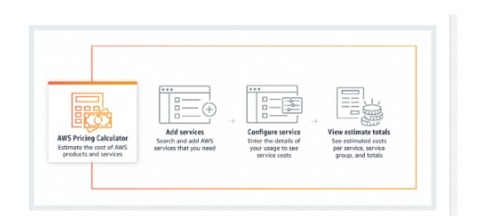
Figure 2: Process of Cost Estimation
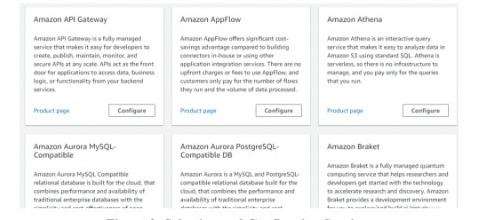
(Source: AWS)
Figure 3: Selecting and Configuring Services
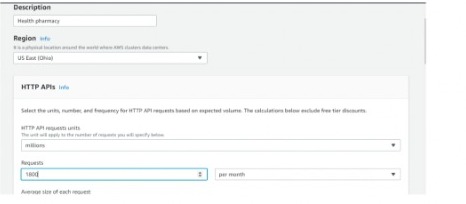
(Source: AWS)
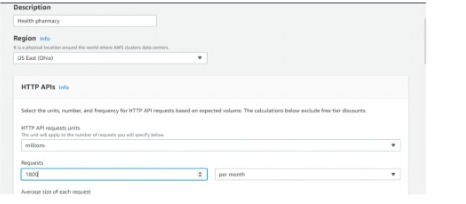
Figure 3_1: Configuring Services
(Source: AWS)
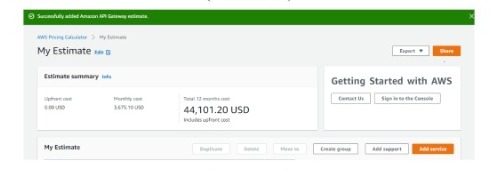
Figure 4: Estimation
(Source: AWS)
As it can be seen in above image the services has been selected and configured according to use and then finally aws provides the estimation cost according to monthly and annually cost that is required for modelling and the estimation can be further edited after adding different service and then can be exported as pdf or CSV file for future use or for presenting.
Conclusion
Cloud computing paradigm has been discussed in the assignment with the challenges that faced during the time adoption of this time of service and what steps can be taken for making everyone educated about this technology that can ease human life. Cost estimation has also been done for selecting when various services are opted. How cloud computing improves service efficiency.
In addition, the assignment covers system virtualisation in cloud computing, as well as the functions of data centres and numerous methodologies. Developing and analysing the computational solution has been done. The research has been carried out in order to gain information in the field of cloud computing, which will improve the skill and overall understanding of cloud computing.
Reference
Journals
Srivastava, P. and Khan, R., 2018. A review paper on cloud computing. International Journal of Advanced Research in Computer Science and Software Engineering, 8(6), pp.17-20.
Dang, L.M., Piran, M., Han, D., Min, K. and Moon, H., 2019. A survey on internet of things and cloud computing for healthcare. Electronics, 8(7), p.768.
Rashid, A. and Chaturvedi, A., 2019. Cloud computing characteristics and services: a brief review. International Journal of Computer Sciences and Engineering, 7(2), pp.421-426.
Sunyaev, A., 2020. Cloud computing. In Internet computing (pp. 195-236). Springer, Cham.
Alam, T., 2020. Cloud Computing and its role in the Information Technology. IAIC Transactions on Sustainable Digital Innovation (ITSDI), 1(2), pp.108-115.
Subramanian, N. and Jeyaraj, A., 2018. Recent security challenges in cloud computing. Computers & Electrical Engineering, 71, pp.28-42.
Gai, K., Guo, J., Zhu, L. and Yu, S., 2020. Blockchain meets cloud computing: A survey. IEEE Communications Surveys & Tutorials, 22(3), pp.2009-2030.
Kumar, P.R., Raj, P.H. and Jelciana, P., 2018. Exploring data security issues and solutions in cloud computing. Procedia Computer Science, 125, pp.691-697.
Sadeeq, M.M., Abdulkareem, N.M., Zeebaree, S.R., Ahmed, D.M., Sami, A.S. and Zebari, R.R., 2021. IoT and Cloud computing issues, challenges and opportunities: A review. Qubahan Academic Journal, 1(2), pp.1-7.
24/7 Chat Support | Get A+ Grade | Written by Top-Notch Subject Experts | 20% Off 1st Order |
Know more about UniqueSubmission’s other writing services:

